This is our on our land and our mountain, Sliabh Ghairbh. This is our eighth generation here. That is my son driving the digger doing that road.”
With the farm, just outside Kinvarra, running to 350 acres, Anna’s Burren Explore tour is centred on the unique experience of farming in this landscape. They continue to farm in the traditional ways, she says “like the transhumance, the winterage. Every October we put the cattle up there, they make their own way up and they come down in April when they are calving”.
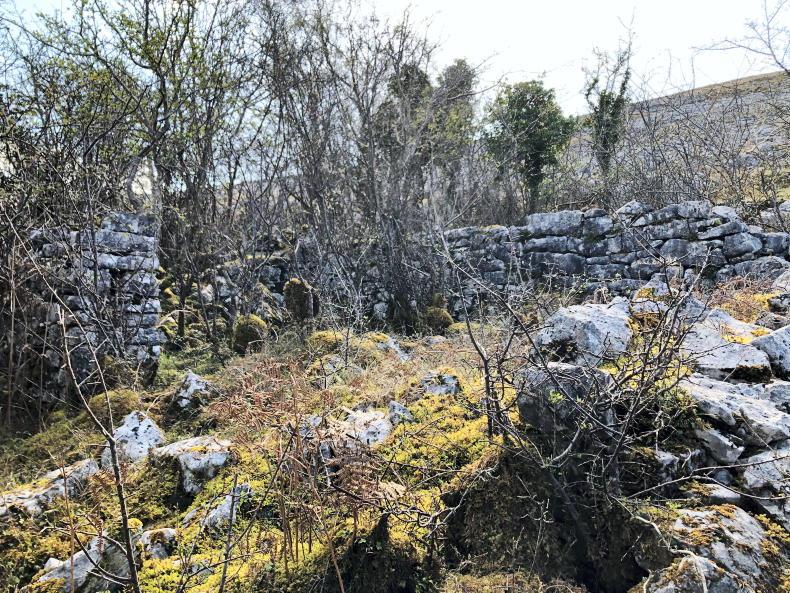
“There’s plenty of food up there, herbs, a mixture of grasses, there are streams and wells, and the stone platforms act like radiators.”
She explains how, when on the mountain, the animals don’t need any fodder. When they come down in April, it gives a chance for the wild flowers to bloom. It is “all natural”.
“The animals create cracks in the rocks [with] their hooves and this makes space for rare flowers and native flowers. Then you have the goats, of course, we have tons of wild feral goats here. They keep down the scrub. They are part of the Burren.”
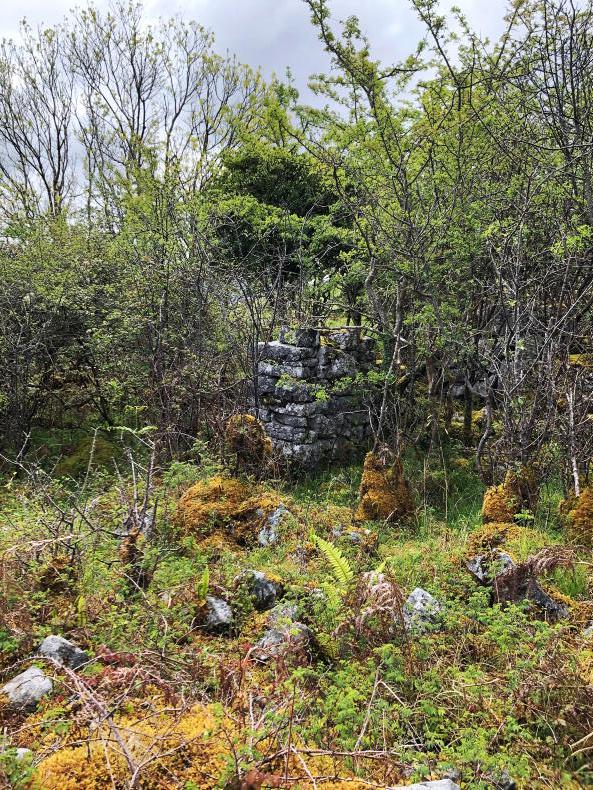
Anna is a retired Irish and geography teacher and she peppers our conversation with our native language as we discuss how the tours came to start last year.
“When I retired I walked up here. We knew that the ruins were there but we never went near them. It’s a sacred place really. My husband’s grandparents and their grandparents before them said that there was nuns with grey habits tilling those fields beside the ruins.
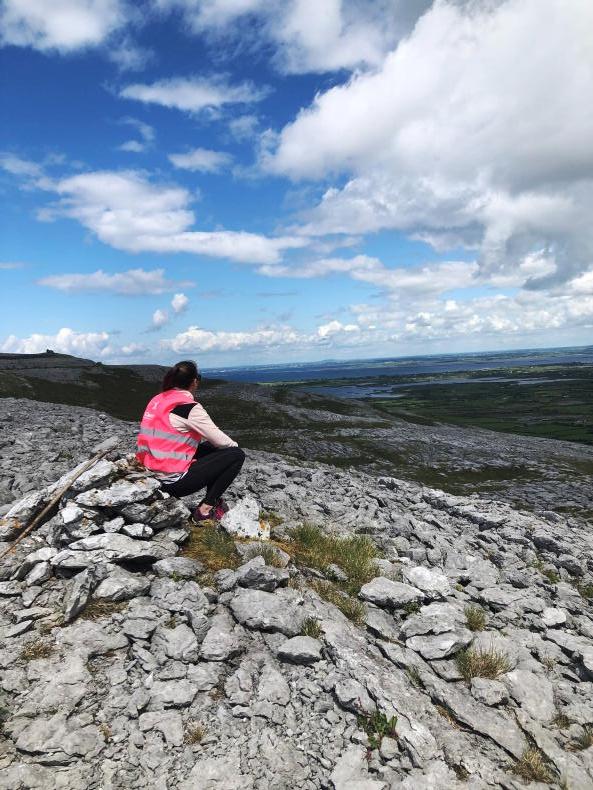
Logainmneacha (placenames) are important to Anna’s story. With Corcomroe Abbey just a few short miles away, Anna and the local people believe that this field is connected to the Cistercians of the Abbey. The name of the field is Pairc na Liadhas – the field of the grey habits. She pauses to make sure I understand the importance of the stories “this is all our bealoideas (folklore). It’s handed down. You’ll see it when you go over there – it’s an enclosure, it stands out in the Burren.”
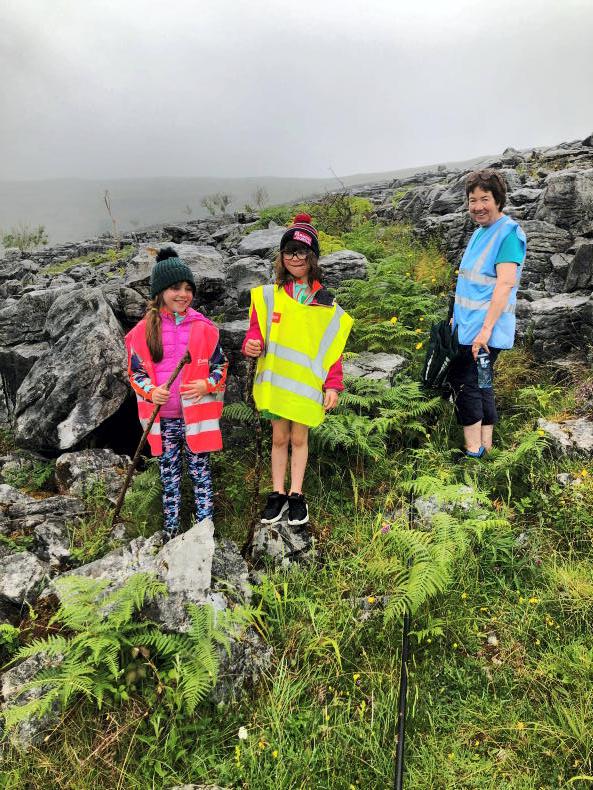
The McKeever girls with Anna.
As we make our way through Pairc na Liadhas, Anna points to the array of biodiversity – orchids dominate – being in season at the time of our visit. She proudly tells us of their 100% record with “the lady from the Burren programme”.
“She came out and it ticked all the boxes for biodiversity because there’s every variety of a flower, weed, the whole lot thrown in there together, and then you have butterflies you have bees and the grasshopper. She says it’s there as well. Now I’ve never seen it but she said it’s there.”
The seen and unseen heritage
Dr Christy Cunniffe is a retired archaeologist who is helping Anna to explore the historical perspective while paying respect to the bealoideas.
We are standing within the building that Anna refers to as the ruins or the convent. Although it has no roof, we are sheltered from the rain as it gently falls by the trees that have grown around the ruins.
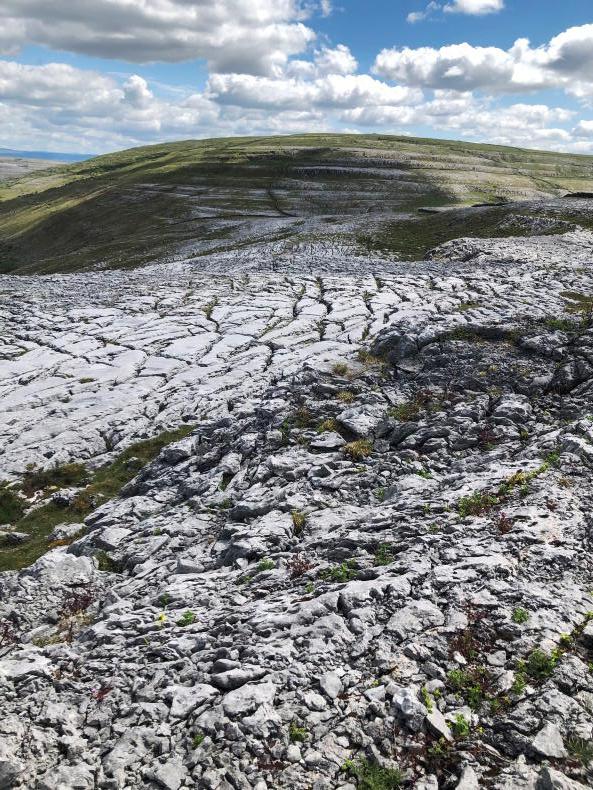
The Burren landscape.
With his archaeological hat on, Christy explains that with the wall thickness, the building itself is probably 18th or 19th century. However he admits that an archaeologist can only explain what they can see and that the unseen and the bealoideas pay an equally important part in a structures potential story.
“Clearly it’s well above the farming line of the area so whoever was up here was quite isolated. And it’s also just under the foothills of the mountain, looking down on Corcomroe – St Mary of the Fertile Rock – as the Cistercians called it, a reference to the Burren’s fertile soil.
“They are really referring to the landscape, the abundance of growth and flowers. You’ll actually find that the plants and the flowers are carved in Corcomroe. And, of course, most of those flowers are only native to the Burren. So this place is a special little oasis, a sanctuary up here on the slope of the mountains.”
Read more
Escape to Achill Island
A different spin on life
This is our on our land and our mountain, Sliabh Ghairbh. This is our eighth generation here. That is my son driving the digger doing that road.”
With the farm, just outside Kinvarra, running to 350 acres, Anna’s Burren Explore tour is centred on the unique experience of farming in this landscape. They continue to farm in the traditional ways, she says “like the transhumance, the winterage. Every October we put the cattle up there, they make their own way up and they come down in April when they are calving”.

“There’s plenty of food up there, herbs, a mixture of grasses, there are streams and wells, and the stone platforms act like radiators.”
She explains how, when on the mountain, the animals don’t need any fodder. When they come down in April, it gives a chance for the wild flowers to bloom. It is “all natural”.
“The animals create cracks in the rocks [with] their hooves and this makes space for rare flowers and native flowers. Then you have the goats, of course, we have tons of wild feral goats here. They keep down the scrub. They are part of the Burren.”

Anna is a retired Irish and geography teacher and she peppers our conversation with our native language as we discuss how the tours came to start last year.
“When I retired I walked up here. We knew that the ruins were there but we never went near them. It’s a sacred place really. My husband’s grandparents and their grandparents before them said that there was nuns with grey habits tilling those fields beside the ruins.

Logainmneacha (placenames) are important to Anna’s story. With Corcomroe Abbey just a few short miles away, Anna and the local people believe that this field is connected to the Cistercians of the Abbey. The name of the field is Pairc na Liadhas – the field of the grey habits. She pauses to make sure I understand the importance of the stories “this is all our bealoideas (folklore). It’s handed down. You’ll see it when you go over there – it’s an enclosure, it stands out in the Burren.”

The McKeever girls with Anna.
As we make our way through Pairc na Liadhas, Anna points to the array of biodiversity – orchids dominate – being in season at the time of our visit. She proudly tells us of their 100% record with “the lady from the Burren programme”.
“She came out and it ticked all the boxes for biodiversity because there’s every variety of a flower, weed, the whole lot thrown in there together, and then you have butterflies you have bees and the grasshopper. She says it’s there as well. Now I’ve never seen it but she said it’s there.”
The seen and unseen heritage
Dr Christy Cunniffe is a retired archaeologist who is helping Anna to explore the historical perspective while paying respect to the bealoideas.
We are standing within the building that Anna refers to as the ruins or the convent. Although it has no roof, we are sheltered from the rain as it gently falls by the trees that have grown around the ruins.

The Burren landscape.
With his archaeological hat on, Christy explains that with the wall thickness, the building itself is probably 18th or 19th century. However he admits that an archaeologist can only explain what they can see and that the unseen and the bealoideas pay an equally important part in a structures potential story.
“Clearly it’s well above the farming line of the area so whoever was up here was quite isolated. And it’s also just under the foothills of the mountain, looking down on Corcomroe – St Mary of the Fertile Rock – as the Cistercians called it, a reference to the Burren’s fertile soil.
“They are really referring to the landscape, the abundance of growth and flowers. You’ll actually find that the plants and the flowers are carved in Corcomroe. And, of course, most of those flowers are only native to the Burren. So this place is a special little oasis, a sanctuary up here on the slope of the mountains.”
Read more
Escape to Achill Island
A different spin on life









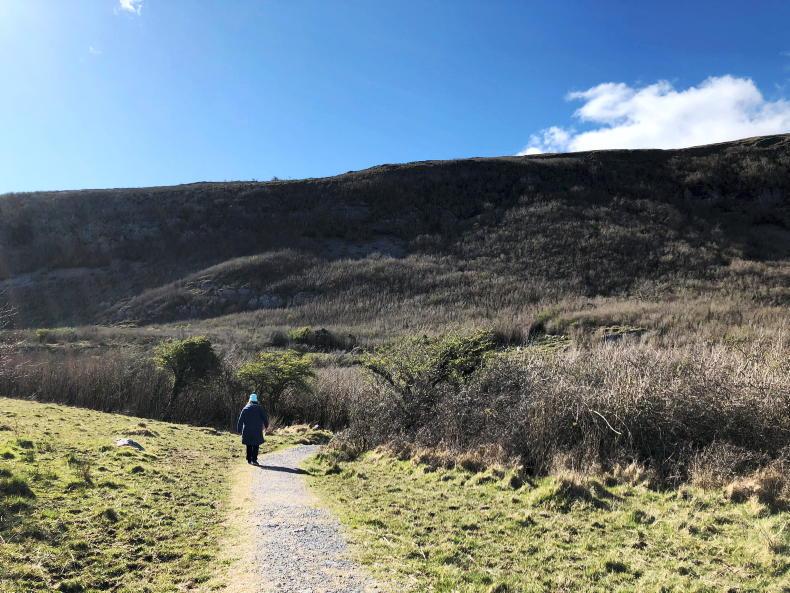
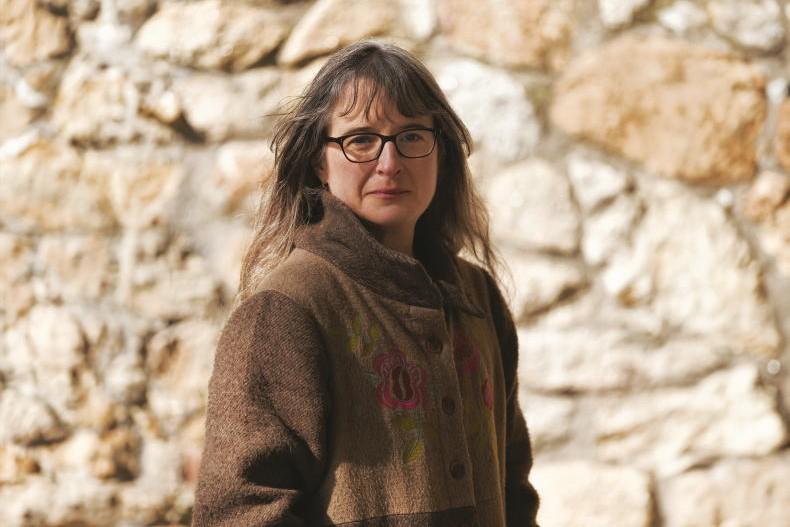

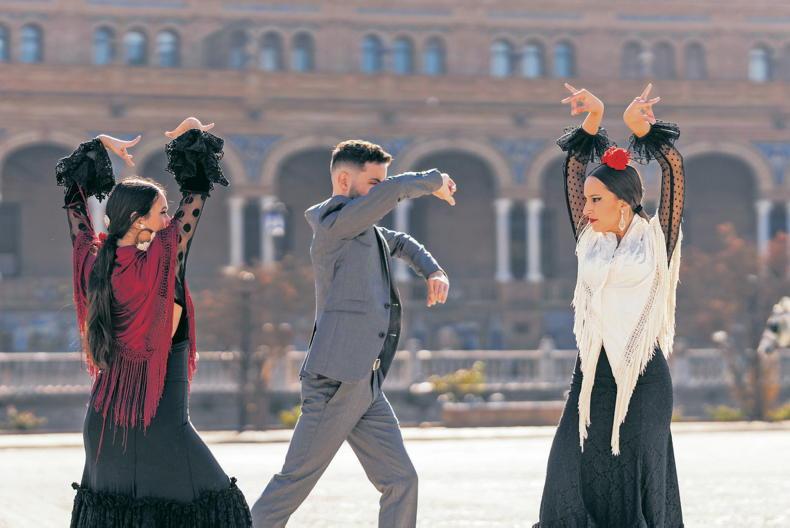
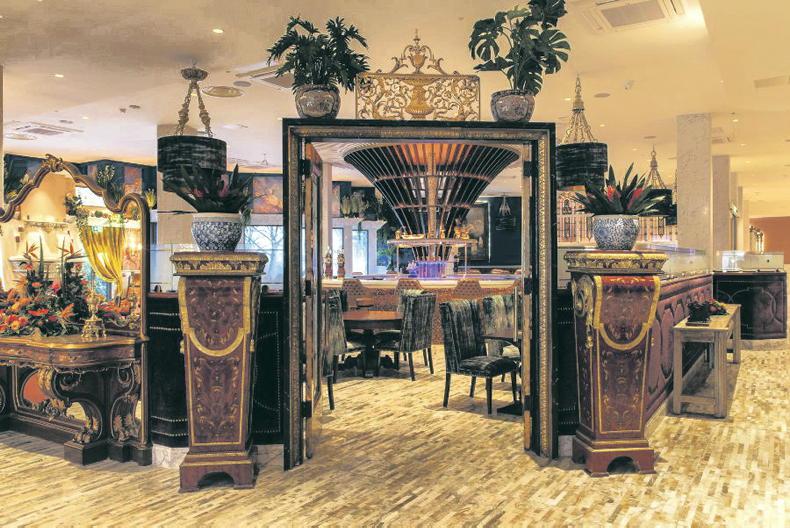
SHARING OPTIONS